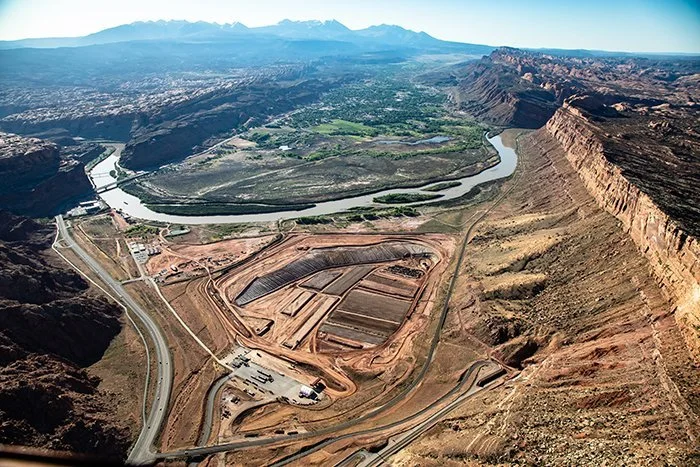
Our special thanks to those of you who have recently contributed to Fairewinds Energy Education.
Your donations are critical to our work for two reasons:
First, the projects, research, and analyses you depend upon cost money!
Second, and equally important, foundation and philanthropic organizations that support our scientific efforts must see a broad base of small donors and participatory giving when they assess Fairewinds as a prospective nonprofit to fund.
So on both counts, our heartfelt thanks to all who donated!
And, in the nonprofit world, December is called The Giving Month, so you did not miss this opportunity to help support our scientific efforts!
We will continue writing to you during December to have the funds to continue community-volunteer citizen-science and support local communities to find solutions to stop leaking radioactivity and its negative health impacts.
Heads Up for a Special Event!
On this Saturday, December 4, 2021, the video symposium Out of the Ground, into the Ground: The Challenge of Nuclear Heritage linking the arts to atomic power will be aired for free for all to view. See details below.
Uranium begins in the ground and ultimately is disposed of there. Here are the details of its life cycle:
Out Of The Ground: When in the earth, Natural Uranium is slightly radioactive, containing 0.7% U235, which is fissile, meaning scientists can split its atoms and use its energy for other purposes, and the 99.3% remaining is non-fissile U238. Uranium is mined or physically extracted from underground rocks by pumping toxic acids into the earth. Once the U235 is enriched to between 6% and 19%, it is used to power atomic reactors. Unfortunately, enriching atomic fuel also creates lots of extra depleted U238, which is desired for explosive munitions that start a fire that cannot be put out.
Into The Ground: Once used in a nuclear reactor or munitions, the used [called spent] uranium is highly radioactive and must be stored underground for a quarter of a million years [250,000].
Residual On The Ground: Once the Uranium is unearthed and mined, the mining sites are open scars that release a witch’s brew of material that had been trapped under the earth’s surface before extraction. Many of these old mine sites are highly toxic from the chemicals used and the radioactivity left behind. Most of the world’s toxic mining sites are located on Indigenous lands.
This symposium tells the womb to tomb story of Uranium. The presenters discuss the roles and responsibilities of both Art And Science to analyze and reflect upon human use of the atom to generate electricity and create weapons.
Watch: Out of the Ground, into the Ground: The Challenge of Nuclear Heritage
Katja Matthias moderates an online dialogue between artist Grit Ruhland and nuclear historian Bo Jacobs
Saturday, December 4th, 2021
1 PM: German Time
9 PM: Japanese Time
7 AM: New York Time
Information and Zoom link: https://www.redraw-tragedy.de/kiste-4-copy/
Note: if you miss this event, it will be posted in its entirety after it has been edited.
The event is part of the Redraw Tragedy art exhibition
Contact Info:
Robert Jacobs: jacobs@hiroshima-cu.ac.jp
Natalia Wehler: natalia.wehler@nat-atelier.de
Event Details Below:
World History / Studies, Art, Art History & Visual Studies, Environmental History / Studies, History of Science, Medicine, and Technology, Contemporary History
Nuclear Heritage: A Conversation in Art and Science
How do you warn a generation in 100,000 years about our nuclear legacies, deeply hidden at their final deposits, perhaps long invisible and forgotten? Climate change and nuclear waste illustrate how long-term, unforeseeable and catastrophic the effects of our current use of technology, resources, and the environment are. Robert Jacobs and Grit Ruhland engage in a dialogue about the roles and responsibilities of art and science.
The discussion will take place in English. It is public, and questions and comments are possible afterward. The zoom will be recorded.
Grit Ruhland is an artist; she shows her installations in the exhibition Redraw Tragedy. Grit Ruhland studied sculpture and spatial concepts at the HfBK Dresden. She received her doctorate from the Bauhaus University Weimar on "Follow-UP LANDSCAPE. An investigation into the effects of uranium mining on the landscape around Gera/Ronneburg.
Nuclear historian Robert Jacobs teaches and researches at the Hiroshima Peace Institute (Hiroshima City University) in Japan. His research focuses on the global history and culture of atomic technologies, radiation techno-policy, and global hibakusha issues. His new book, Nuclear Bodies: The Global Hibakusha, will be published by Yale University Press in 2022.
Header Image:
MOAB, Utah – The Moab Uranium Mill Tailings Remedial Action (UMTRA) Project recently commissioned new aerial photography of its project sites. The photos show the landscapes of southeastern Utah from about 5,500 feet above sea level, with a focus on EM’s cleanup at a former uranium-ore processing facility. The 130-acre tailings pile created from the former mill is adjacent to the Colorado River at center. Workers excavate and condition the tailings before they are removed and placed in steel containers with locking lids for transport by rail to a permanent disposal cell in Crescent Junction, Utah. The city of Moab is pictured in the distance. Department of Energy (DOE).

 2 years ago
21
2 years ago
21
